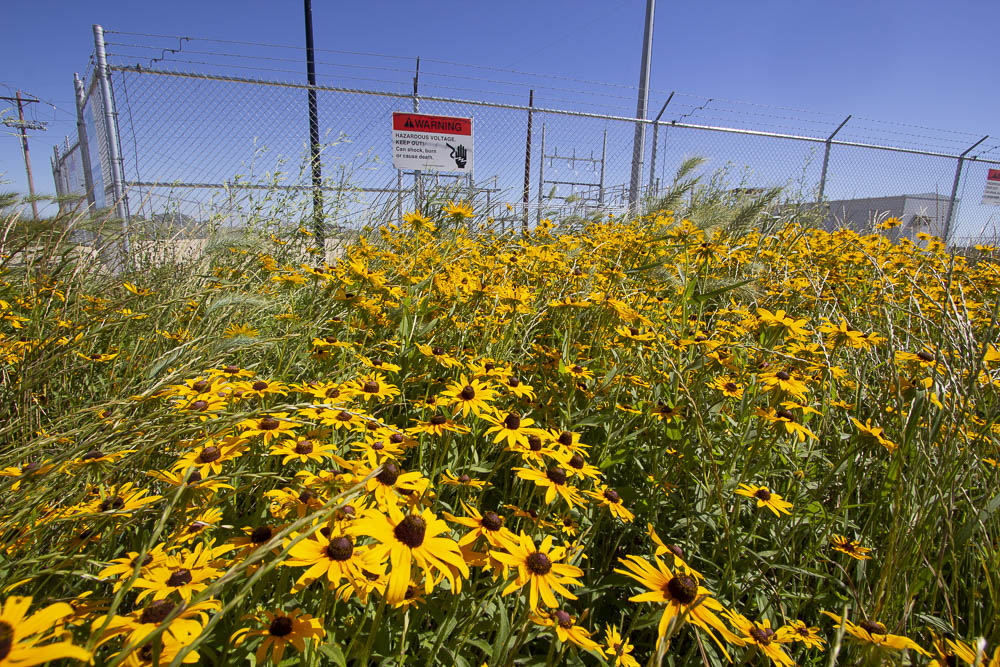
Pollinator planting at Randolph substation.
It’s been about one year since Dakota Electric Association announced planting pollinator friendly habitat at some of its substations, and it recently announced plans to expand its pollinator friendly habitat at another substation and further explore more locations.
Many Dakota Electric substations are located in urban areas, which are surrounded by grass and limit the potential for pollinator plantings, but the cooperative ran a trial project where it restored natural prairie habitat around some rural substations. Along with planting two existing substation sites, Dakota Electric had pollinator grass planting included as part of the bid for a new substation it had built last year near Randolph, and working with its power supplier, Great River Energy, had another joint substation seeded with native pollinator plants, totaling four in all.
“The locations we planted last year are doing well,” said Craig Knudsen, Dakota Electric’s land use manager. “It will take another couple of years for the sites to fully mature, but we wanted to expand the project and plant pollinator friendly habitat at at least one more rural substation.”
By adding another substation this year, and including newly constructed solar sites, Dakota Electric will have pollinator grasses at seven locations, covering nearly 30 acres.
Prairie Restorations is the contractor that is managing some of the projects for Dakota Electric.
“We plant the locations with ecologically appropriate species from the Midwest after we complete site preparation,” Beth Markhart from Prairie Restorations said. “The final habitat becomes a perfect environment for bees, butterflies and other pollinators.”
A naturally restored environment has tangible benefits, such as reduced fertilizer and chemical weed control and reduced mowing, besides assisting the pollinator population. Dakota Electric will assess the overall impacts of the projects, including costs and benefits, and continue to evaluate if more locations could benefit from habitat restoration.
Prairie Restorations said it can take up to three years to get the landscape habitat fully functioning, but natural benefits can already be seen at the sites.


